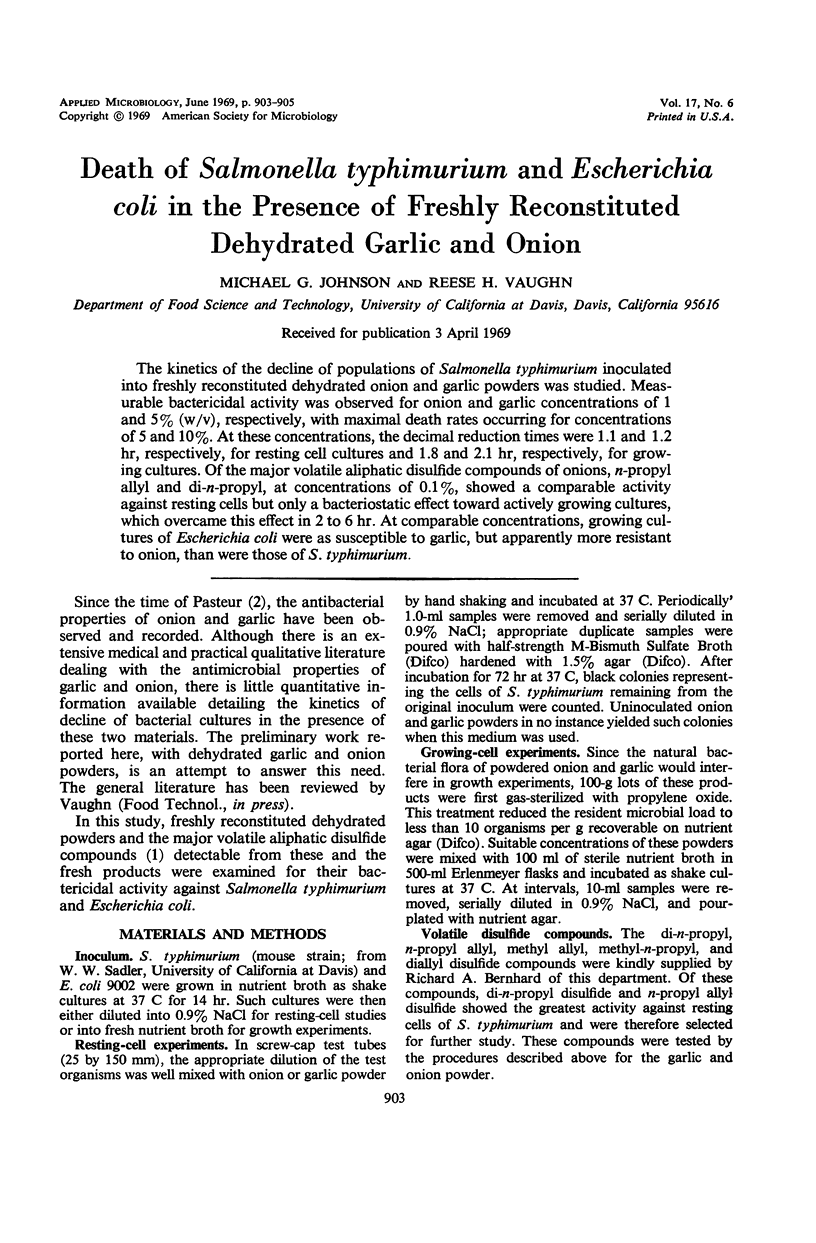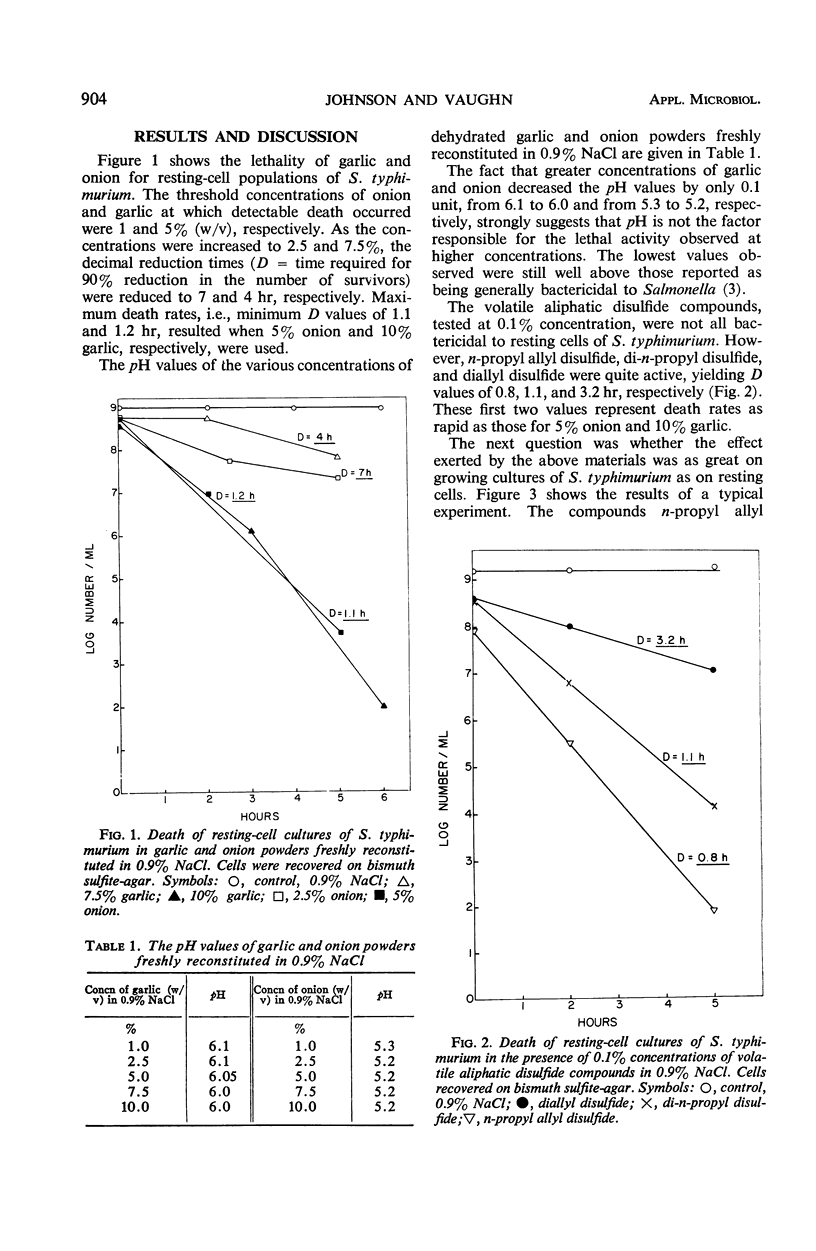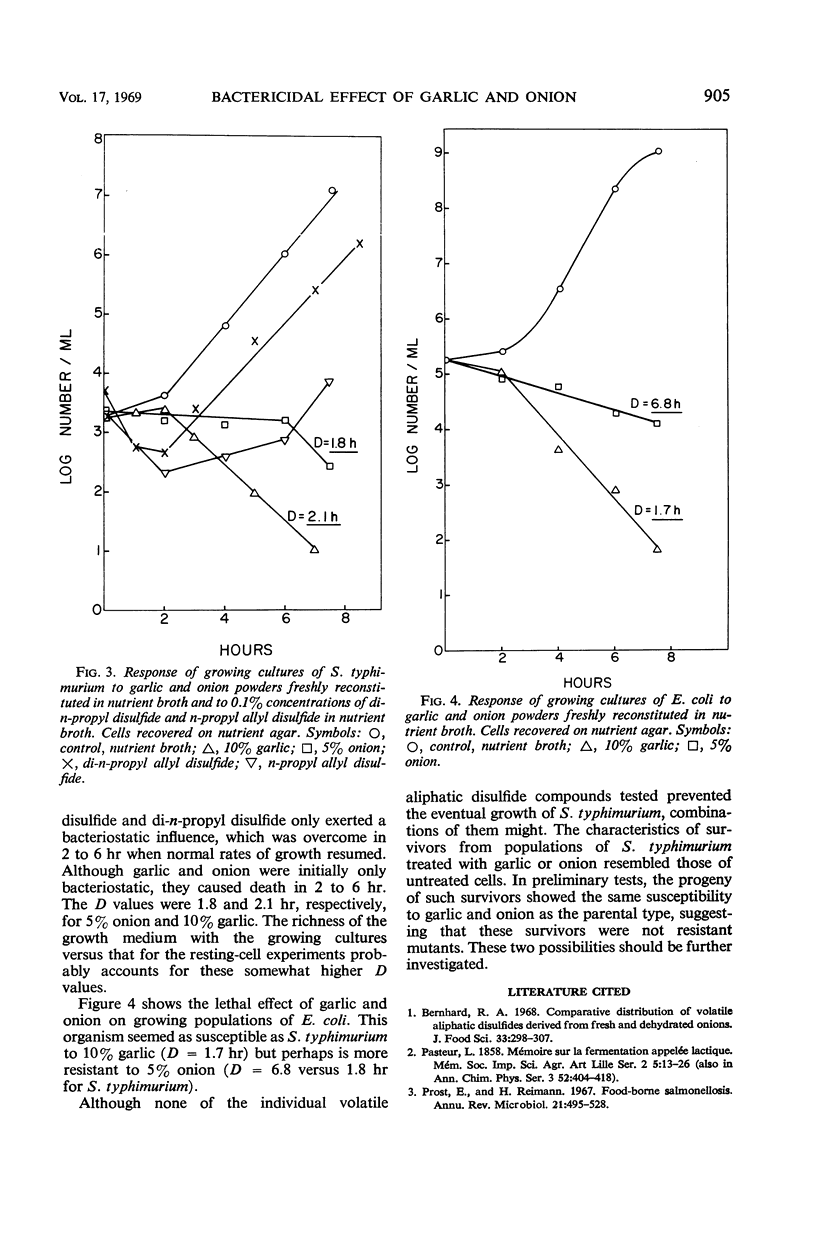Abstract
The kinetics of the decline of populations of Salmonella typhimurium inoculated into freshly reconstituted dehydrated onion and garlic powders was studied. Measurable bactericidal activity was observed for onion and garlic concentrations of 1 and 5% (w/v), respectively, with maximal death rates occurring for concentrations of 5 and 10%. At these concentrations, the decimal reduction times were 1.1 and 1.2 hr, respectively, for resting cell cultures and 1.8 and 2.1 hr, respectively, for growing cultures. Of the major volatile aliphatic disulfide compounds of onions, n-propyl allyl and di-n-propyl, at concentrations of 0.1%, showed a comparable activity against resting cells but only a bacteriostatic effect toward actively growing cultures, which overcame this effect in 2 to 6 hr. At comparable concentrations, growing cultures of Escherichia coli were as susceptible to garlic, but apparently more resistant to onion, than were those of S. typhimurium.
Full text
PDF


Selected References
These references are in PubMed. This may not be the complete list of references from this article.
- Prost E., Riemann H. Food-borne salmonellosis. Annu Rev Microbiol. 1967;21:495–528. doi: 10.1146/annurev.mi.21.100167.002431. [DOI] [PubMed] [Google Scholar]


